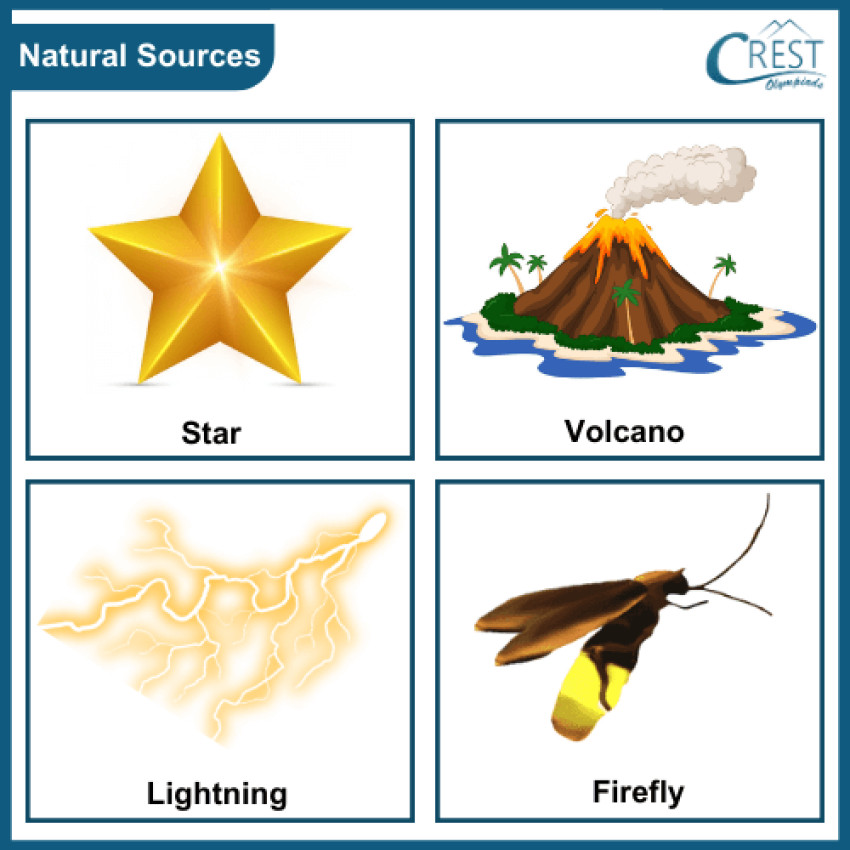
Light and its Properties
a) Light is a type of energy that helps us see things.
b) We can see objects because they either produce their own light or reflect the light that shines on them.
c) Light always travels in a straight line, and it spreads out in all directions from its source.
d) When light hits a smooth surface, it bounces back and changes direction. This bouncing back of light is called reflection, and it allows us to see objects.
e) The light that comes from the sun actually has seven different colours in it, just like the colours we see in a beautiful rainbow.
Sources of Light
There are two types of light sources: natural and artificial.
1. Natural Sources
a) Natural sources of light are things that produce light on their own, without human intervention.
b) The Sun is the most important natural source of light on Earth.
c) Other examples of natural light sources are stars, volcanoes, lightning, and insects like glow worms and fireflies. The Moon doesn't have its own light, but it shines because it reflects the light of the Sun.
2. Artificial or Man-made Sources
a) Artificial sources of light are things created by humans that emit light.
b) Some examples of artificial light sources are candles, light bulbs, tube lights, lamps made from clay, and flashlights.
Luminous and Non-luminous Objects
Objects can be divided into luminous and non-luminous based on whether they produce or reflect light.
Transparent, Translucent and Opaque Materials
Inside our eyes, there are special cells that catch the light and send messages to our brains. This is how we are able to see things around us. But, not all things can let the light go through them. Some materials block or stop the light from passing through. Based on this ability, objects can be divided into 3 categories:
Transparent Materials
a) These materials allow light to pass through them completely without blocking or changing them.
b) When light goes through them, it stays clear and doesn't get distorted.
c) Examples of transparent materials are glass, air, and clear water.
Translucent Materials
a) These materials allow some light to pass through them, but not all of it.
b) They make the light a little blurry or dim when it passes through
c) Examples of translucent materials are frosted glass, tissue paper, wax, and tracing paper.
Opaque Materials
a) These materials don't let any light pass through them at all.
b) When light tries to go through them, it gets blocked completely.
c) Examples of opaque materials are wood, stone, coins, bricks, animals, and plants.
Shadow
a) When something gets in the way of light, it creates a dark patch called a shadow on the ground or a wall.
b) Shadows always appear on the opposite side of where the light is coming from. For example, if the light is in front of you, the shadow will be behind you.
c) Shadows made by sunlight are shortest at noon when the sun is high in the sky. In the mornings and evenings, when the sun is lower, the shadows become longer.
d) Only objects that don't let light pass through them completely, like opaque and translucent objects, can make shadows. Transparent objects, which allow light to go through, don't create shadows.
e) The length and direction of a shadow change depending on where the light is coming from. If the light source moves or if the object or the person moves, the shadow will also change in length and direction.


